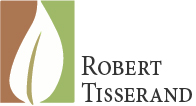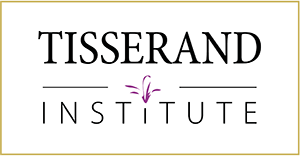At the first “POP Conference” I gave a presentation entitled Essential Oils as Psychotherapeutic Agents
[fusion_builder_container hundred_percent=”yes” overflow=”visible”][fusion_builder_row][fusion_builder_column type=”1_1″ background_position=”left top” background_color=”” border_size=”” border_color=”” border_style=”solid” spacing=”yes” background_image=”” background_repeat=”no-repeat” padding=”” margin_top=”0px” margin_bottom=”0px” class=”” id=”” animation_type=”” animation_speed=”0.3″ animation_direction=”left” hide_on_mobile=”no” center_content=”no” min_height=”none”]

Presenters and delegates at the first Psychology of Perfumery Conference at Warwick University UK in 1986. I am front row 5th from left, Anita Roddick is front row 2nd from right, Shizuo Torii is two people left and two up from Anita. Both Dr. Torii and I gave presentations about essential oils. Conference organizers: Steve Van Toller, back row at right, George Dodd, front row at left
The conference proceedings were published in 1988 in the form of a hardback book: Perfumery: The Psychology & Biology of Fragrance, edited by Steve Van Toller and George Dodd. Below is a short extract from my presentation. It was written almost 25 years ago, so is not an accurate reflection of current thinking.
Twentieth-century aromatherapy
In spite of its early beginnings in Egypt, the invention of distillation in the tenth century, a revival of interest in essential oils as therapeutic substances in sixteenth-century Germany, and their subsequent common usage by both doctors and herbalists, the term aromatherapy was not coined until 1937, when a book of that same title was written by a French chemist. In Italy, in the early 1920s, there appeared the first serious reviews of psycho-aromatherapy, written by two medical doctors, Giovanni Gatti and Renato Cajola. In 1923 they published The Action of Essences on the Nervous System, explaining clearly how odours influence mood and emotion, and defining the states of anxiety and depression. Two methods of application for the essential oils are suggested – inhalation or ingestion. In digestive absorption the essential oil is introduced like other medicines, and arrives at the nerve cells by the slow transmission of the bloodstream. In respiratory absorption the essences exert an influence on the brain via the nerve endings of the olfactive mucosa. The authors noted, immediately following essential oil vapor contact with the olfactory nerve endings, changes in pulse rate, blood circulation, and depth of respiration. They concluded that “the sense of smell has, by reflex action, an enormous influence on the function of the central nervous system.”
Essential oils identified as sedatives, and therefore of use in anxiety states, include: chamomile, melissa, neroli, petitgrain, opoponax, asafoetida and valerian. Stimulating essences are said to include: angelica, cardamon, lemon, fennel, cinnamon, clove and ylang-ylang; this last oil is also credited with aphrodisiac properties. The authors point out that sometimes a light, initial dose of an essential oil will have a stimulating effect, while increased or repeated dosage may lead to a state of sedation. Their experiments were conducted using smelling-pads of cotton wool impregnated with solutions of essential oils and applied with masks to the mouth; alternatively, the air was sprayed with aromatic solutions.
In recent years this early research has been taken a step further by another Italian, professor Paolo Rovesti of Milan University. He also describes two possible methods of application, one being to put 1-3 drops of essential oil on to a sugar lump, and to hold this in the mouth. By this method some of the essence is inhaled, while some is ingested. The other method is to spray the air with aromatic aerosols.
According to Rovesti, ‘green notes’ are usually anxiety-relieving and sedative. He makes the point that mixtures of essential oils are more pleasant than single oils, and are therefore more acceptable and more effective for those suffering from nervous tension. A similar point is made by Van Toller et al (1983) who comment that “pleasant and unpleasant responses are not opposite in terms of cognitive processing” and explain that the brain simply rejects odours perceived as unpleasant. Therefore, they do not gain the same access to the central nervous system. It would seem that pleasant odours have at least a better chance of stimulating positive therapeutic responses. For example, essential oils of valerian and asafoetida would possibly not be the ideal ingredients for an anti-stress perfume or a relaxing massage oil. Even though they might be effective sedatives when taken orally, the perceived aesthetic quality of any odiferous product is a factor which must also be considered.
Among the anxiety-relieving essential oils listed by Rovesti are:
Bergamot
Cypress
Lavender
Lime
Marjoram
Neroli
Opoponax
Petitgrain
Rose
Violet leaf
Against depressive states he suggests:
Jasmine
Lemon
Orange
Sandalwood
Verbena
Ylang-Ylang[/fusion_builder_column][/fusion_builder_row][/fusion_builder_container]

